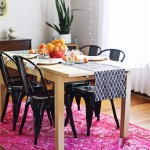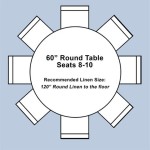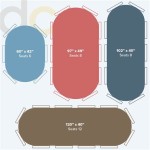How To Build A Garden Table From Scaffold Boards
Constructing a garden table from scaffold boards offers a cost-effective and aesthetically pleasing way to enhance outdoor living spaces. Scaffold boards, known for their durability and rustic appeal, provide a robust material ideal for crafting sturdy and characterful furniture. This article provides a detailed guide on how to build a garden table using scaffold boards, covering the necessary materials, tools, and step-by-step instructions.
Before embarking on the project, it is crucial to plan the table's dimensions to suit the intended purpose and available space. Consider the number of people the table should accommodate, the desired height, and the overall aesthetic to complement the garden's existing style. Once the dimensions are determined, the appropriate quantity of scaffold boards and other materials can be sourced.
Key Point 1: Gathering Materials and Tools
The success of any DIY project hinges on having the right materials and tools readily available. This section outlines the essential items needed to construct a garden table from scaffold boards.
Scaffold Boards: Source reclaimed or new scaffold boards from a reputable supplier. Reclaimed boards often possess a unique weathered appearance, adding character to the table. Ensure the boards are structurally sound and free from excessive damage or rot. The number of boards required depends on the desired table size and design. Typically, three to five boards are sufficient for the tabletop, while additional boards may be needed for the legs and frame.
Table Legs: A variety of options exist for table legs, including metal legs, wooden legs crafted from timber, or even repurposed materials like sturdy branches or reclaimed industrial components. Pre-fabricated metal legs offer a clean, modern aesthetic and are available in various styles and heights. Wooden legs can be custom-built to match the table's overall design. The choice of legs significantly influences the table's stability and visual appeal.
Wood Screws: Select high-quality wood screws appropriate for outdoor use. Stainless steel or coated screws are recommended to prevent rust and corrosion. The screw length should be sufficient to securely fasten the scaffold boards and legs together, typically ranging from 50mm to 75mm. Ensure the screw heads are countersunk to create a flush surface.
Wood Glue: Exterior-grade wood glue provides additional bonding strength and water resistance, crucial for outdoor furniture. Apply wood glue to the joints before screwing the boards together to create a more durable and long-lasting connection.
Sandpaper: Various grades of sandpaper are necessary for smoothing the scaffold boards and removing splinters. Start with a coarse grit (e.g., 80 grit) to remove rough edges and imperfections, followed by medium grit (e.g., 120 grit) and fine grit (e.g., 220 grit) for a smooth finish.
Wood Stain or Preservative: Protecting the wood from the elements is essential for extending the table's lifespan. Choose a wood stain or preservative specifically designed for outdoor use. These products provide water resistance, UV protection, and help prevent rot and insect infestation. Select a color that complements the surrounding garden environment.
Varnish or Sealer: Applying a varnish or sealer after staining or preserving the wood provides an additional layer of protection and enhances the table's durability. Look for exterior-grade varnishes or sealers that offer resistance to scratches, moisture, and UV damage.
Tools: The following tools are essential for this project:
- Measuring tape
- Pencil
- Saw (circular saw or hand saw)
- Drill with screwdriver bits
- Sander (orbital sander or sanding block)
- Clamps
- Safety glasses
- Work gloves
- Dust mask
Prior to commencing work, ensure all tools are in good working order and that appropriate safety precautions are taken.
Key Point 2: Constructing the Tabletop and Frame
The construction of the tabletop and frame is the core of the project. This section details the steps involved in assembling these components.
Preparing the Scaffold Boards: Begin by inspecting the scaffold boards for any loose nails, splinters, or imperfections. Remove any protruding nails and use a hammer to drive in any loose ones. Thoroughly clean the boards with a brush and water to remove dirt and debris. Allow the boards to dry completely before proceeding.
Cutting the Boards to Size: Using a measuring tape and pencil, mark the desired length of the tabletop on the scaffold boards. Use a saw to cut the boards to the specified length. Ensure the cuts are straight and accurate to create a uniform tabletop surface.
Sanding the Boards: Sand the boards thoroughly, starting with a coarse grit sandpaper to remove any rough edges and imperfections. Progress to medium and fine grit sandpaper to achieve a smooth and even surface. Pay particular attention to the edges and corners to prevent splinters.
Assembling the Tabletop: Arrange the scaffold boards side by side to form the tabletop. Use clamps to hold the boards securely together. Apply wood glue to the edges of each board where they meet. Drill pilot holes through the top of each board into the adjacent board to prevent the wood from splitting. Secure the boards together with wood screws, ensuring the screw heads are countersunk.
Building the Frame: Construct a frame to support the tabletop and provide a solid base for attaching the legs. The frame can be made from additional scaffold board offcuts or other suitable timber. Cut the frame pieces to the required dimensions, ensuring they are slightly smaller than the tabletop to create a clean edge. Assemble the frame using wood glue and screws, creating a rectangular or square shape that fits snugly beneath the tabletop.
Attaching the Frame to the Tabletop: Apply wood glue to the top of the frame. Position the frame centrally beneath the tabletop and clamp it securely in place. Drill pilot holes through the frame into the underside of the tabletop. Secure the frame to the tabletop with wood screws. Ensure the screws are long enough to penetrate the tabletop but not so long that they protrude through the top surface.
Key Point 3: Attaching the Legs and Finishing Touches
Once the tabletop and frame are assembled, the next step is to attach the legs and apply the finishing touches to protect and enhance the table's appearance.
Attaching the Legs: Position the table legs at the corners of the frame. Ensure the legs are evenly spaced and aligned to provide a stable base. Depending on the type of legs used, different attachment methods may be required. Metal legs often come with pre-drilled holes for screwing them directly to the frame. Wooden legs can be attached using wood screws and metal brackets or by creating mortise and tenon joints for a more traditional look.
Sanding and Filling: After attaching the legs, inspect the entire table for any remaining imperfections, such as gaps or splinters. Fill any gaps with wood filler and sand the filled areas smooth once dry. Use fine-grit sandpaper to lightly sand the entire table surface to prepare it for staining or preserving.
Staining or Preserving the Wood: Apply a wood stain or preservative according to the manufacturer's instructions. Use a brush or cloth to apply the stain evenly to all surfaces of the table, including the tabletop, frame, and legs. Allow the stain to dry completely before applying a second coat if desired. Ensure adequate ventilation during application and drying.
Applying Varnish or Sealer: Once the stain or preservative is dry, apply a coat of exterior-grade varnish or sealer. This will provide an additional layer of protection against moisture, UV damage, and scratches. Apply the varnish or sealer evenly and allow it to dry completely before applying additional coats. Follow the manufacturer's instructions for application and drying times.
Final Inspection and Adjustments: After the varnish or sealer has dried completely, conduct a final inspection of the table. Check for any uneven surfaces, loose screws, or other imperfections. Make any necessary adjustments or repairs to ensure the table is structurally sound and aesthetically pleasing. Sand any remaining imperfections with fine sandpaper and apply touch-up varnish or sealer as needed.
By following these detailed instructions, it is possible to construct a durable and attractive garden table from scaffold boards, providing a functional and stylish addition to any outdoor space. The use of reclaimed materials contributes to a sustainable approach to furniture making, while the customizable design allows for a unique and personalized piece that complements the garden's overall aesthetic.

How To Make A Table Out Of Scaffold Boards Upcycling Safe
.jpg.aspx?strip=all)
How To Make A Table Out Of Scaffold Boards Upcycling Safe
.jpg.aspx?strip=all)
How To Make A Table Out Of Scaffold Boards Upcycling Safe

Thrifty Diy How To Upcycle Scaffolding Boards Into A Garden Table My Life By Cassie Fairy Inspiration For Living Lovely On Budget

Thrifty Diy How To Upcycle Scaffolding Boards Into A Garden Table My Life By Cassie Fairy Inspiration For Living Lovely On Budget

Makeover A Dining Table Made From Scaffold Boards Roses And Rolltops

Diy Scaffold Board Garden Bench Project How To Make Your Own Outdoor Seat From Scaffolding Planks

Thrifty Diy How To Upcycle Scaffolding Boards Into A Garden Table My Life By Cassie Fairy Inspiration For Living Lovely On Budget
.jpg.aspx?strip=all)
How To Make A Table Out Of Scaffold Boards Upcycling Safe

How To Make An Industrial Rustic Scaffold Board Dining Table And Bench
Related Posts








